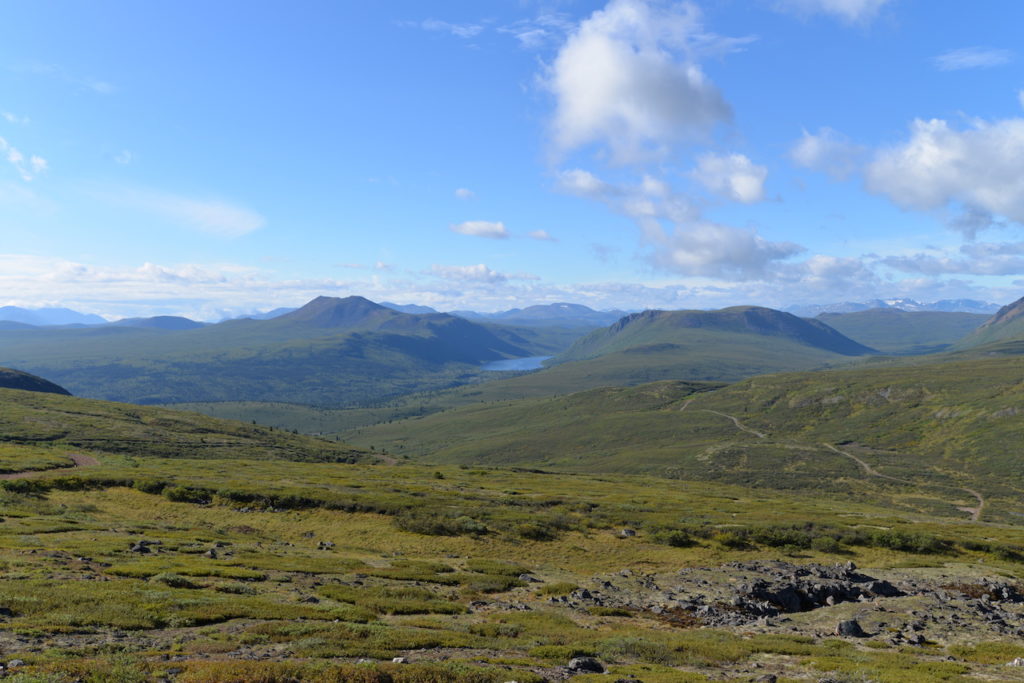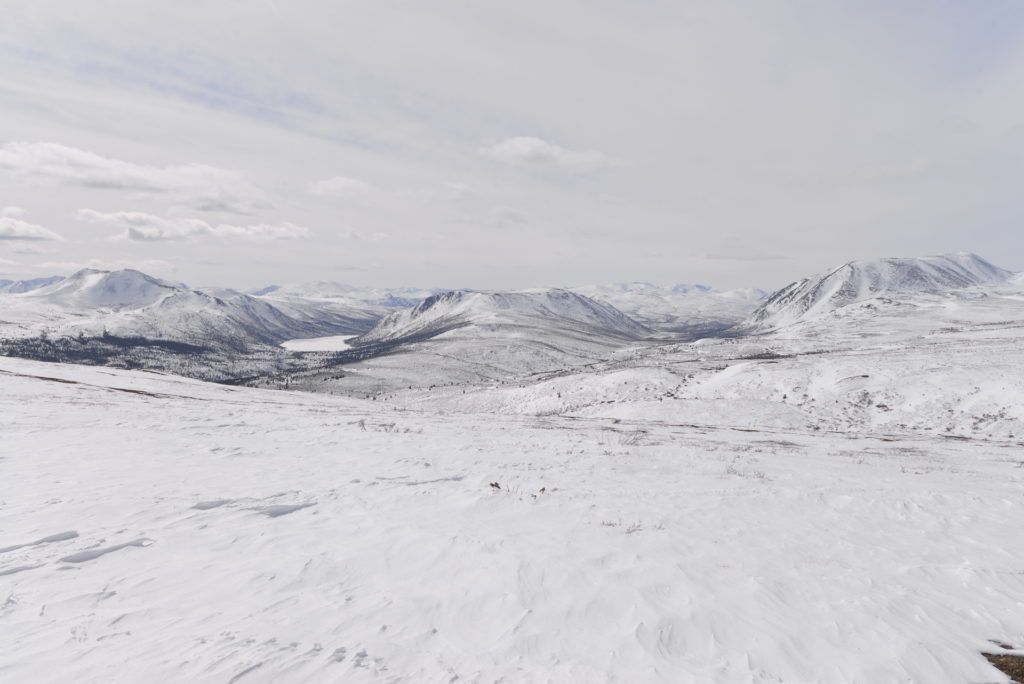Wolf Creek
The Wolf Creek Research Basin (drainage area about 176 km2 lies in southern mountainous headwaters of the Yukon River Basin in the subarctic region of northwestern Canada. Research began in 1992 to study the climate, water cycle and ecology of this poorly studied region.
The sub-arctic continental climate is characterized by a large seasonal variation in temperature, low relative humidity and relatively low precipitation. Mean annual temperature is in the order of -3°C. Summer and winter extremes of +25oC and -40oC are not uncommon. Mean annual precipitation is 300 to 500 mm per year depending on elevation, with approximately 40 percent falling as snow. With a general northeasterly aspect, elevations range from 660 to 2080 m.
Wolf Creek is situated within the Boreal Cordillera ecozone and consists of three principal ecosystems, boreal forest, sub-alpine taiga (shrub-tundra) and alpine tundra with proportions of 22, 58 and 20% respectively of the total basin area. Permafrost is present in locations on north facing slopes and there is sporadic permafrost throughout the basin, with prevalence increasing with elevation.

